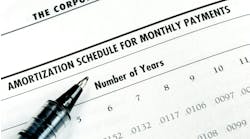Finance: Big Data Analytics Offer a Solution to a Taxing Situation
It's not exactly a secret that the United States has a high corporate tax rate; in fact, at 40%, it's the highest among the 34 OECD countries and second in the world only to the United Arab Emirates, according to Big Four auditing firm KPMG. Don't expect that situation to change any time soon, either. In terms of total dollars, corporate income taxes are projected to double from $274 billion in 2013 to $552 billion by 2022, based on the Obama Administration's 2015 Fiscal Year Budget.
Excessively high U.S. corporate tax rates have shrunk the U.S. corporate sector and reduced corporate tax revenues, says Jack Mintz, director of the University of Calgary's School of Public Policy and author of a recent Tax Foundation study on corporate taxes. Compounding the problem is that the average effective tax rate on corporations is irregular from year to year, largely due to the complexity of the tax code.
"A company's competitiveness is hurt by taxation that undermines productivity through investment," Mintz adds. "There is no doubt that the free-market system of the U.S. has been a beacon for entrepreneurs and capital investors. But it can do better with multinational companies if its corporate tax system can be reformed to combine a lower tax rate with a broader tax base that facilitates capital investment in general rather than benefiting only a few who are able to navigate through a complex tax structure."
To make sense of the labyrinthine tax code, many companies have turned to business analytics tools, hoping to leverage technology to wade through the corporate morass of Big Data. Making sense of it all, however, requires being able to find the right data -- a task that is critical to compliance and to avoiding tax penalties and costly audits, notes John Kennedy, manager of business consultants for Thomson Reuters' tax and accounting business. "It's all about quality," he says. "The data must be both accurate and complete."
First of all, he suggests, choose an analytics solution that's capable of consolidating transactional data stored in multiple systems and that can meld that data with the thousands of tax law changes that occur every year. The goal is to transform that Big Data into actionable, accurate data, while eliminating siloed, error-prone tax calculations that could put your company at risk.
Kennedy offers the following guidelines to automating the tax department:
- "Make sure your company has the most up-to-date tax research, which includes rates, rules, logic and product taxability information," he urges. "For example, in the U.S. alone, businesses had to comply with over 580 indirect tax rate changes in 2012, spanning more than 14,000 jurisdictions and 44,000 different rate/jurisdiction combinations. Without the most accurate data, accurate calculations are impossible."
- Kennedy recommends that companies opt for a robust tax determination engine, one that provides tax jurisdiction, taxability, tax rate tables and tax calculation logic, along with full transaction reporting. "With thousands of taxing jurisdictions, all with continually changing tax rates, having a robust tax calculation and determination engine ensures that the correct tax rates are charged from the get-go," he says.
-
"Since most companies don't have just one system, tax integration is critical to providing a complete view of various transactions from ERP systems, as well as e-commerce, point-of-sale and legacy financial systems," Kennedy notes. The more finance systems you can automate, the more you'll be able to benefit from tax automation.
| The investment community has rediscovered U.S. manufacturing. Learn which sectors offer investors the most opportunity at www.industryweek.com/finance/follow-money |
- "The final step is compliance," he says, "which provides return preparation, electronic filing (where supported) and audit reporting. If necessary, the ability to import transaction data from multiple financial systems into the compliance solution is critical. Again, without the complete and accurate view of data, creating accurate returns and audits reports is a moot point."





